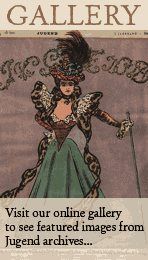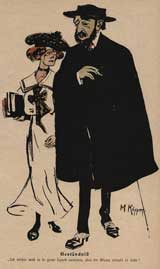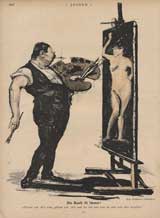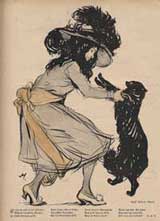Glossary
Jugendstil
This was a style of art nouveau that became a predominant form in Germany between 1896 and the end of the first world war. In addition to the traditional art forms of paint and sculpture, Jugendstil art extended to home décor, furnishings, utilitarian objects like pitchers, and even to architecture. Like the other forms of art nouveau, Jugendstil artists designed in clean, flowing lines based heavily on the female form, vegetation, and classical art, and drew from the history of their own countries to add a unique flavour to their works. Jugendstil, as a German form, looked to ancient Viking and Teutonic mythology, borrowing ideas from both ancient writings and contemporary German opera.Art Nouveau
A style of art popular around the turn of the 19th-20th century, Art Nouveau used clean, sharp lines and stylized images of women, vegetation, and classical imagery to create not just art you could hang on your wall, but art from utilitarian objects: spoons, pitchers, clothing, jewelry, furnishings, and more. Art Nouveau was the French version of the Arts and Crafts Movement that most Western countries at this time experienced, but it lent its name to the whole movement.Typography
In essence, this is the art and skill of arranging text with images in a way that is both visually pleasing and easy to read. Typography is also used to talk about fonts, which are text styles that are embellished with decorations or put together in varying ways while still maintaining the basic sense of the letter.Lithographic
Lithographic techniques print images on smooth surfaces of any suitable type. This can be as simple as a poster print, or it can be something like a coffee cup or a fabric medium. Recently, certain semiconductors have been engineered that are created via a lithographic process. Lithography is based on acid etching – the image is drawn on the printing surface with an oil, and the rest of the print surface is coated with acid to roughen it and then coated with gum Arabic. The ink adheres to the gummy surfaces, but easily transfers to a smooth ink-adhesive surface. Later lithography used a three or four colour separation to create full-colour artworks. One of the earliest lithographers was Englishman William Blake, whose previously-obscure romantic works in text and picture heavily influenced jugendstil and other forms of art nouveau.Glossary continues on next page →






